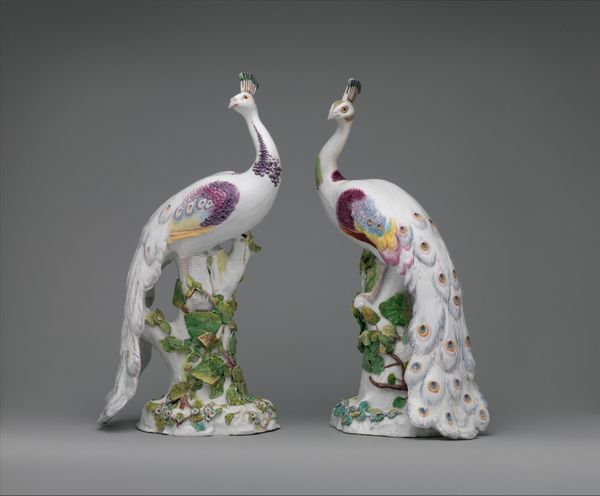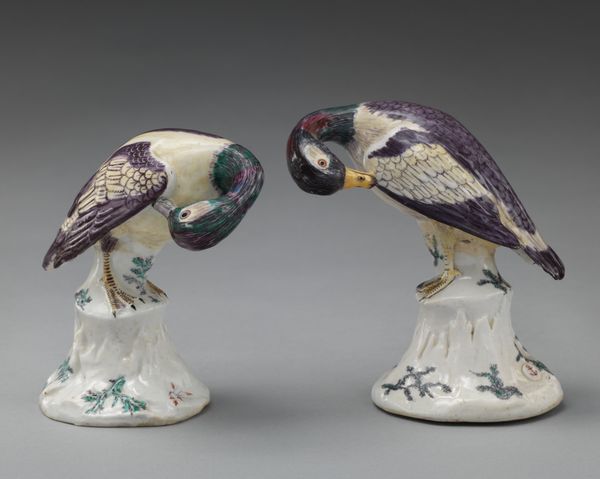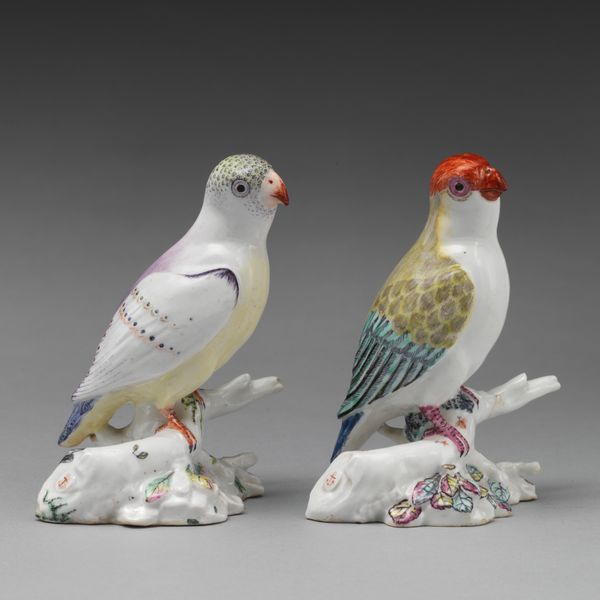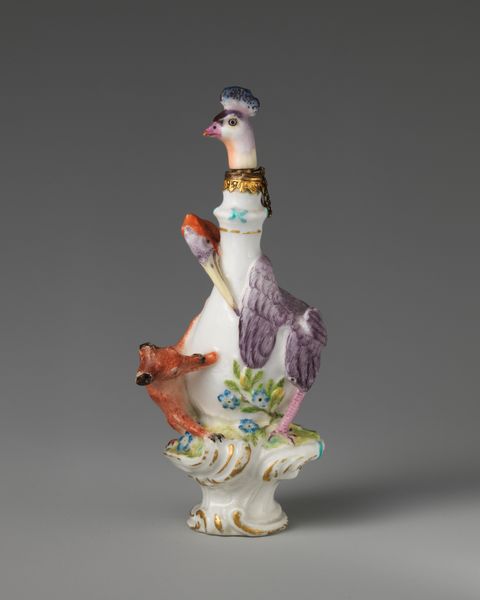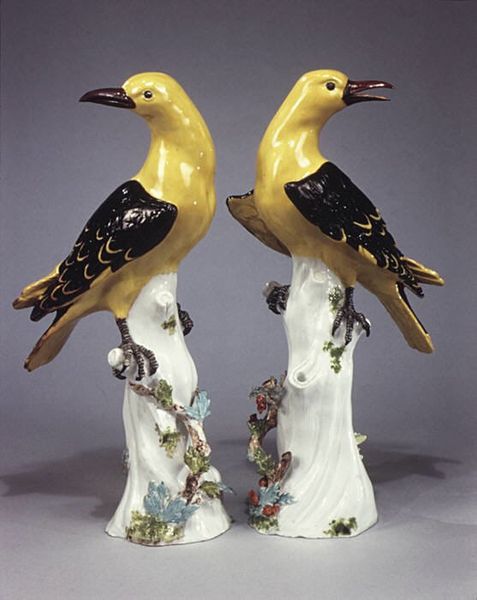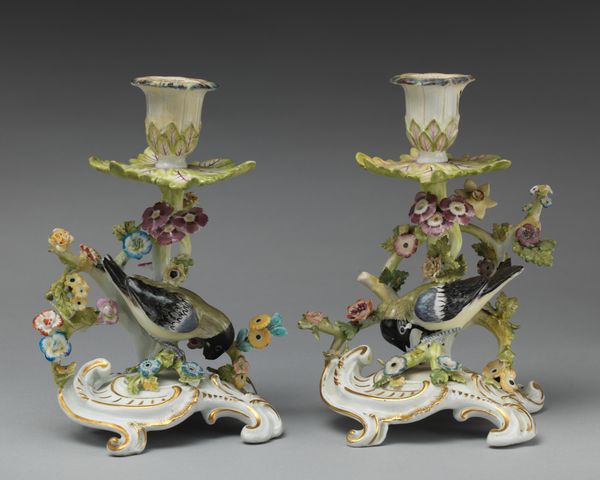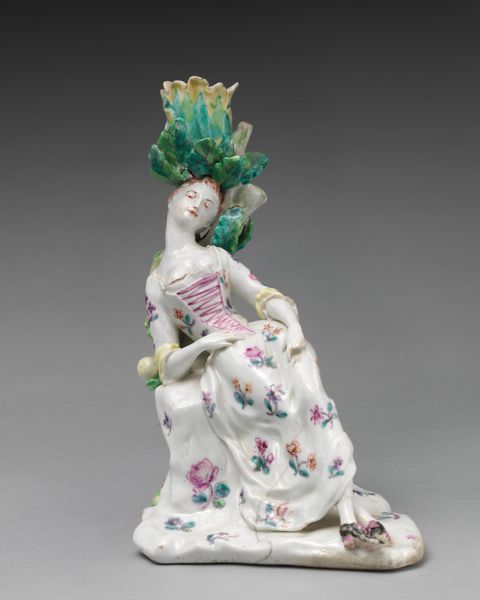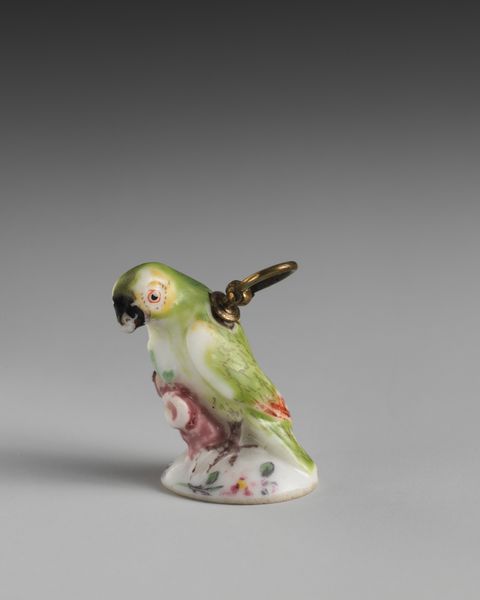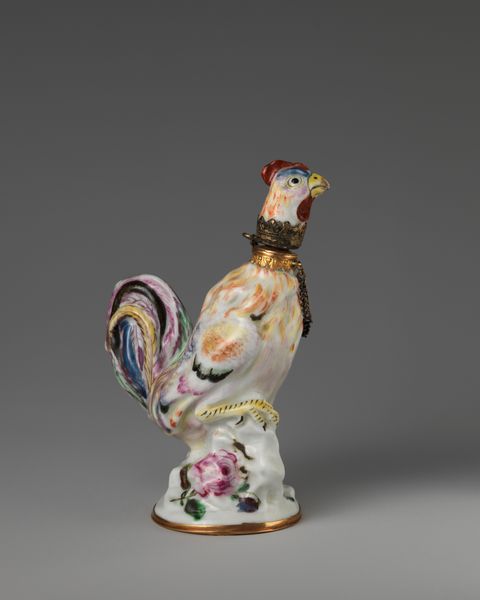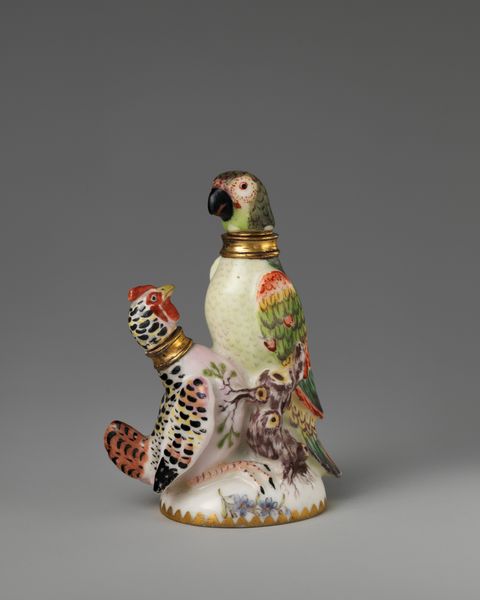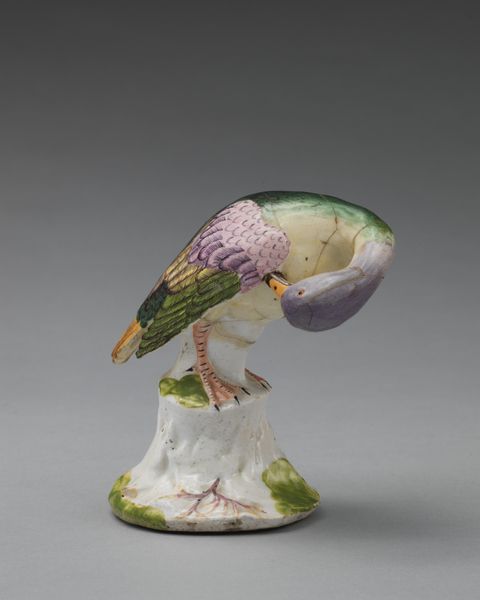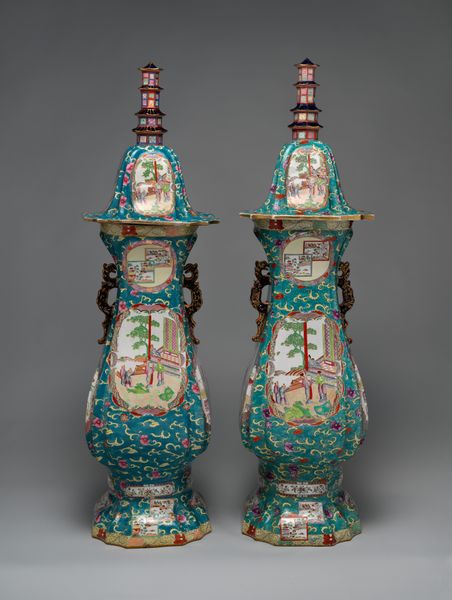
ceramic, porcelain, sculpture
#
baroque
#
ceramic
#
porcelain
#
figuration
#
sculpture
#
decorative-art
#
rococo
Dimensions: Overall (confirmed): 12 1/2 x 3 5/8 x 3 1/4 in. (31.8 x 9.2 x 8.3 cm)
Copyright: Public Domain
Curator: These porcelain sculptures are titled "Bird of Paradise (quetzal)," and they date back to 1733. They are attributed to the Meissen Manufactory. What's your initial read on these charming figures? Editor: Striking! They almost vibrate with color, despite the restrained palette. I'm immediately drawn to the dynamic tension created by the birds' mirrored, yet opposing, gestures. It gives them a lively, conversational quality. Curator: Indeed. And it’s worth noting how skillfully the artists have utilized the porcelain medium to mimic the soft texture of feathers while maintaining a sculptural form. The interplay of glossy and matte surfaces enhances the sense of realism. Editor: Looking at them, one can easily see how the Quetzal served as potent symbol of liberty for pre-Columbian cultures. But transposed to 18th century Germany as "Birds of Paradise," I wonder about the cultural shift. What did they represent to Meissen’s patrons? Curator: That is precisely what makes this artwork so engaging. Consider the formal elegance and stylized realism employed here; the emphasis is clearly not on strict zoological accuracy, but instead an interpretation filtered through European Rococo sensibilities. Notice the stylized tree stumps as supporting elements—more like ornamental flourishes than botanical studies. Editor: Perhaps, then, these sculptures acted as an escapist fantasy? They visually articulate a yearning for exotic lands and idealized freedom. Note how the base swirls add an almost dreamlike whimsy that complements the colourful plumage and bold posture, elevating the sculptures from mere ornaments into carriers of potent psychological symbols. Curator: It's a synthesis of reality and artifice. The artisans successfully blend elements of scientific observation with decorative artifice to create pieces that embody the aesthetic tastes and aspirations of the period. Editor: Exactly. Examining the "Bird of Paradise" allows us to peel back the layers of cultural translation and aspiration, seeing the Meissen Manufactory as crafting both beauty and visual metaphors for freedom. Curator: A fine note to conclude on, recognizing how these sculptures operate both aesthetically and ideologically.
Comments
No comments
Be the first to comment and join the conversation on the ultimate creative platform.


